Part of a series of articles titled Park Paleontology News - Vol. 13, No. 1, Spring 2021.
Article
Paleontology in Parashant: No Bones About It

Rose Weeks and Holley Flora, Geoscientists-in-the-Parks
Grand Canyon-Parashant National Monument, Arizona
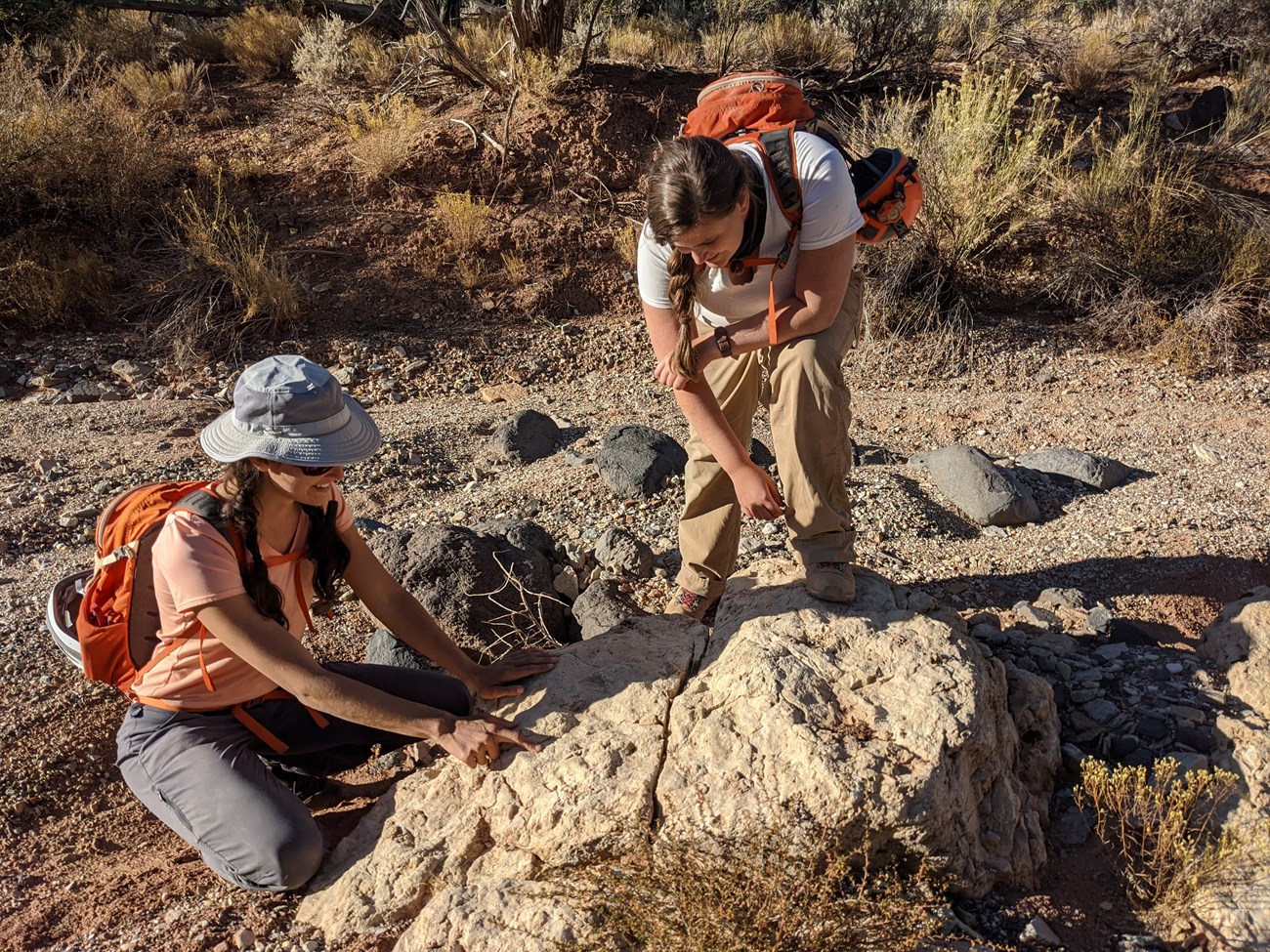
Grand Canyon-Parashant celebrated its 20th birthday on January 11, 2021, but Geoscientists-in-the-Parks researchers Holley Flora and Rose Weeks had not heard of Grand Canyon-Parashant National Monument (PARA) before applying to a seasonal position there in the spring of 2020. Flora and Weeks were hired to complete a systematic field survey of the paleontological resources in this million-acre monument (Figure 1). Being a very large and relatively young monument with few staff, only limited paleontological research had been conducted prior to this survey, though fossil invertebrates were one of the significant resources referenced in PARA’s proclamation.
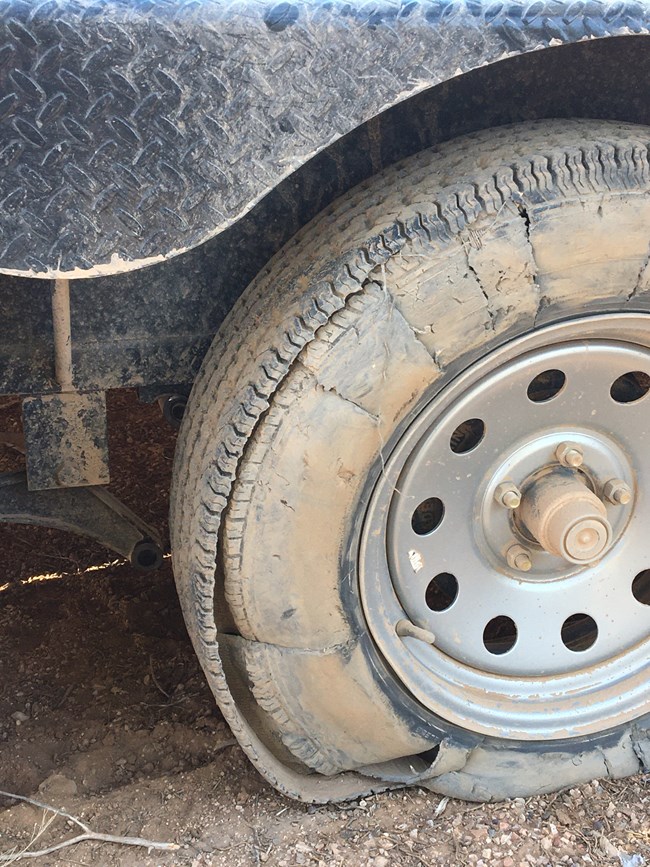
Flora and Weeks are recent masters graduates from the University of Oregon and Loma Linda University, respectively. They see this unique opportunity to gain field experience in a remote and geologically varied monument as valuable work experience. The work they are doing is an important step in paving the way for future paleontology at PARA and management of the non-renewable resources present in the monument. This survey is part of a larger initiative led by NPS senior paleontologist Vincent Santucci to establish paleontological inventories for all the National Parks. Several neighboring parks, like Grand Canyon National Park and Great Basin National Park, have already been inventoried, but PARA is unique in having a larger field component than any other paleontological resource inventory completed thus far.
Carrying out the fieldwork for this inventory was a daunting task to undertake especially in the three months allotted to finish the survey. Three months is both a long time to be in the field and a short time for a project of this size. One of the difficulties at PARA is the complete absence of paved roads; even the monument’s border is an hour’s drive from the nearest paved road. Supervisors enabled Flora and Weeks to become UTV (utility terrain vehicle) certified prior to starting field work because driving around PARA often requires advanced driving skills. Some roads are good quality dirt roads while others are very rough with steep drop-offs and unavoidable obstacles. In addition, PARA’s volcanically active geologic history has left many road surfaces covered with sharp volcanic rocks which often puncture tires (Figure 2).
It’s not uncommon to spend four hours a day driving to and from a fossil locality in PARA. Though Flora and Weeks lodged within the monument in various research cabins and admin sites, during some weeks, the team camped close to the outcrops to avoid spending so much time commuting. These outings provided a special experience of the most secluded and picturesque areas of the monument (Figure 3).
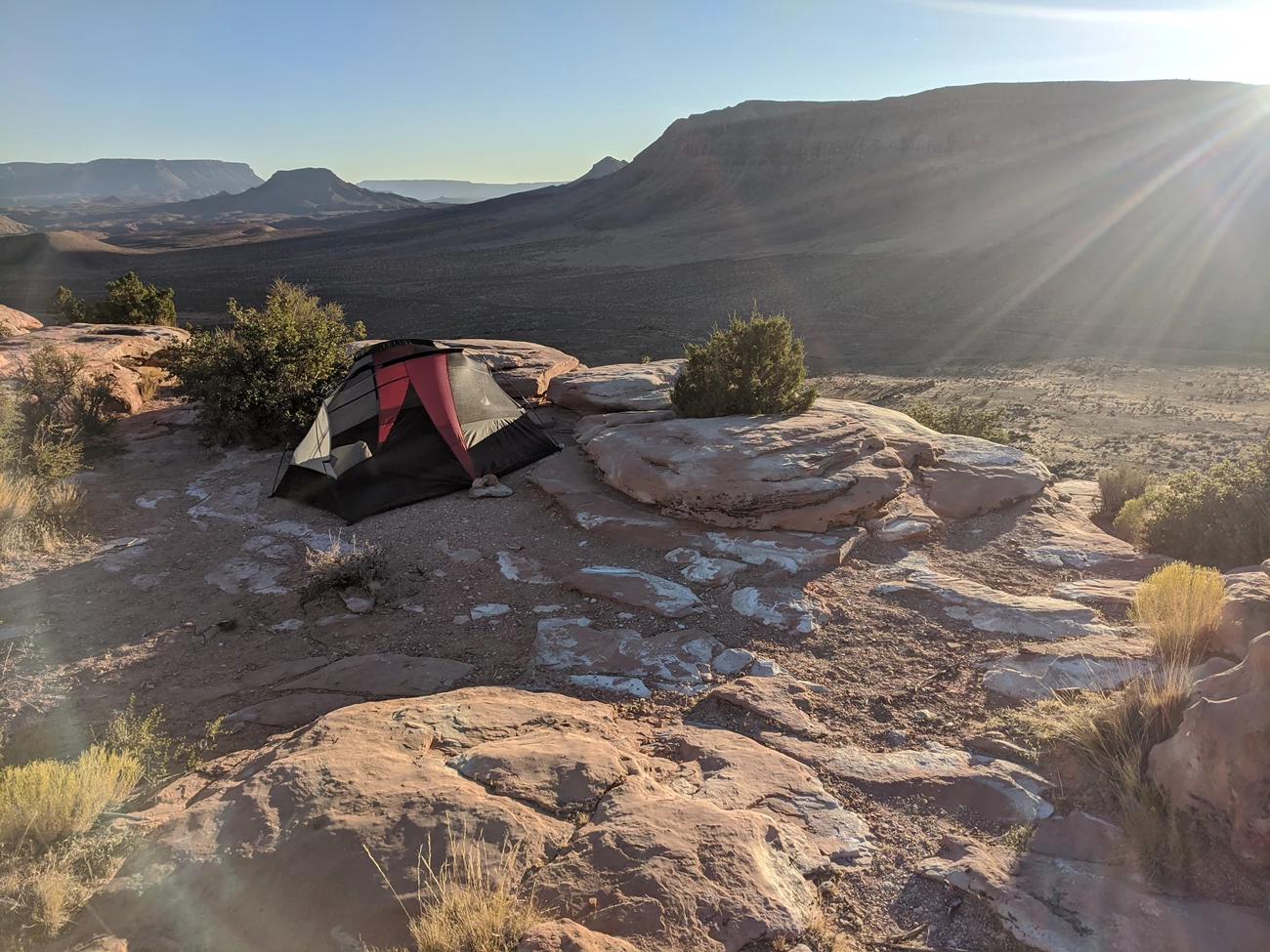
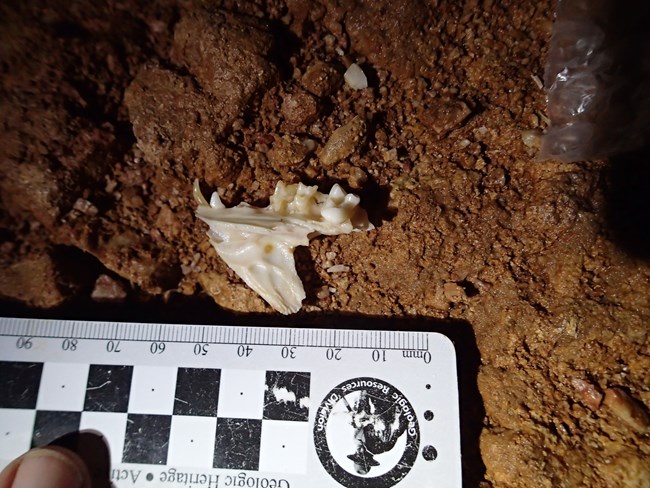
During several weeks of their tenure at PARA, Flora and Weeks were accompanied and assisted by seasoned volunteer scientists Ken and Stephanie Wallace and PARA Physical Scientist Eathan McIntyre. Together the team assessed fossil resources in 38 localities in 15 geological formations. Among the most valuable discoveries are nearly complete skeletons of a Quaternary cat and fox (Figure 4) and a potentially new species of Permian gastropod (Figure 5). Flora and Weeks have also been able to document several localities where current geologic maps omit occurrences of geologic units in remote areas of PARA.
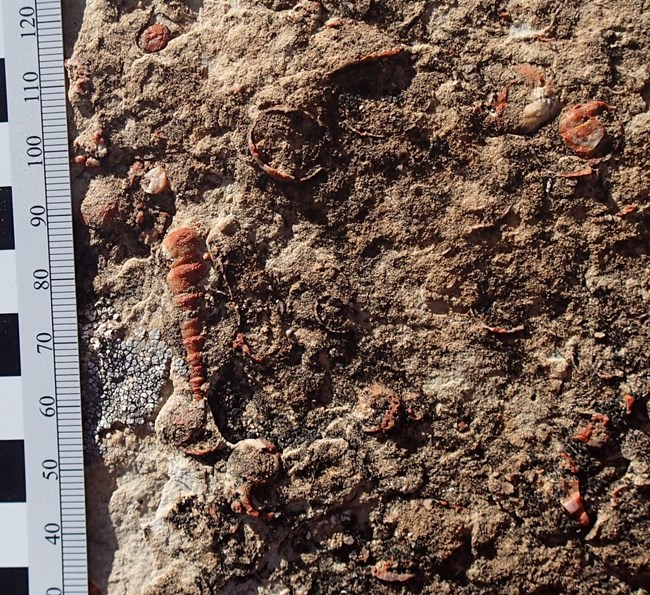
There are a large variety of marine invertebrates represented within the monument’s strata. Identifying them to the species level is often difficult. Not only is there a large taxonomic assemblage present but often only fragments and pieces of the specimen are preserved with enough detail to identify. Limestones in this environment are well indurated, so incorporated fossils are often planed off or cross-cut at irregular angles. Identifying just the broad taxonomic classification of these fossils can be a challenge. Look at Figure 6 and see if you can identify the fossils pictured.
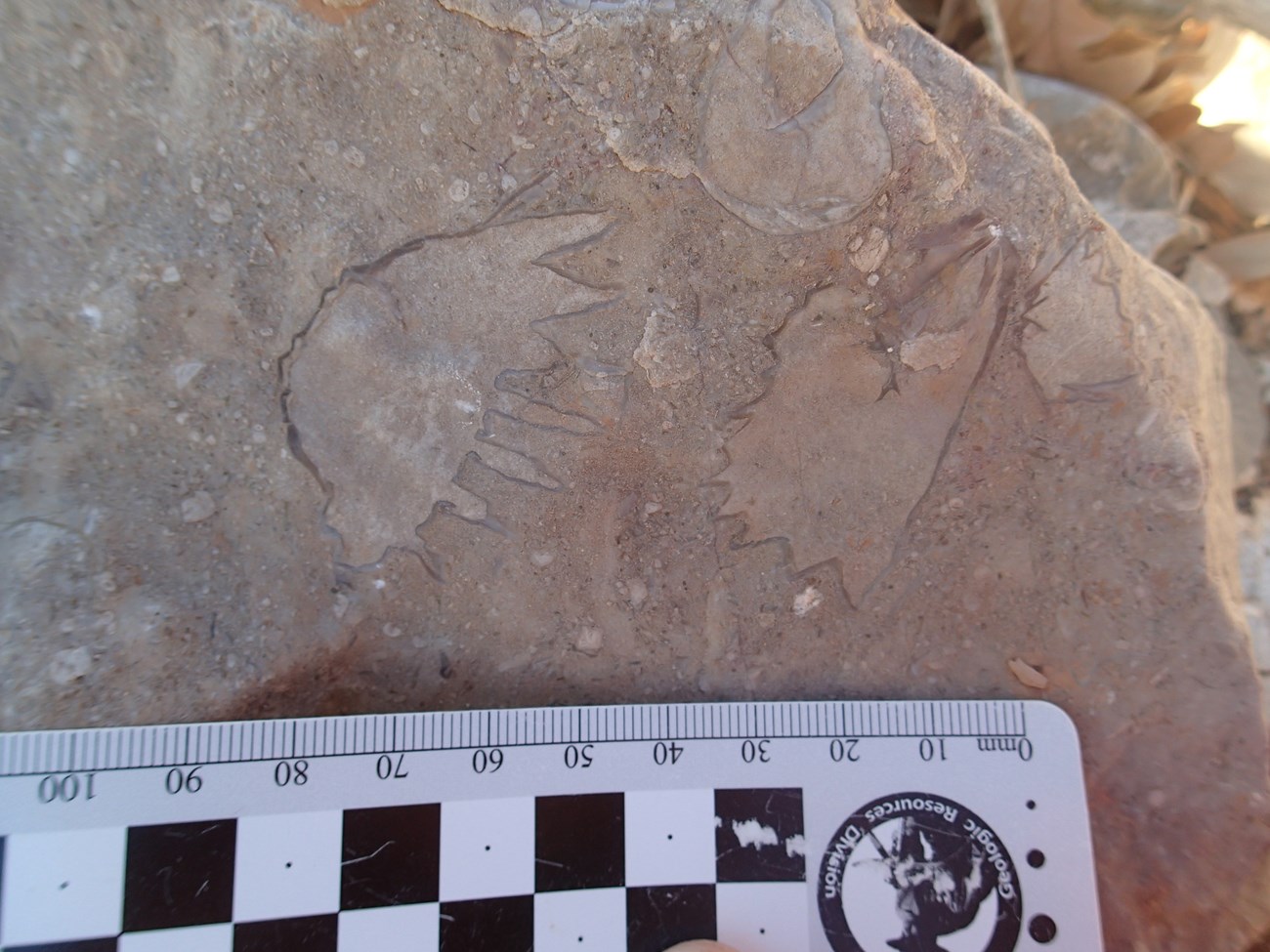
PARA contains many of the same formations found in the Grand Canyon in addition to other sedimentary formations. However, in PARA these formations are spread over a larger area and accessible without the extreme elevation changes associated with the Grand Canyon. Rock formations in PARA span from Cambrian to Recent, with Paleozoic sedimentary rocks being the most abundant, and the team spent significantly more time assessing Paleozoic fossil resources. PARA particularly has great representation of Permian deposits, including the highly fossiliferous shallow marine Kaibab and Toroweap Formations. These formations have well-preserved brachiopods, corals, bryozoans, and bivalves.
The Kaibab Formation has two members, each equally fossiliferous depending on the location. Kaibab outcrops can be seen across most of the monument from east to west. On the eastern side of the monument, the upper member displays a beautifully unique mineral replacement style causing the fossils to “pop” out of the rock in bright red color relief (Figure 5). Other fossils of the same unit have a malachite rind around them (Figure 7). The Kaibab Formation also has a relatively large abundance of fossil sponges (Figure 8). Sponges are a rare fossil due to their soft-bodied anatomy. Typically only the siliceous spicules are preserved, but here, brain-like patterns in spherical chert nodules are the fossil remains of Permian sponges.
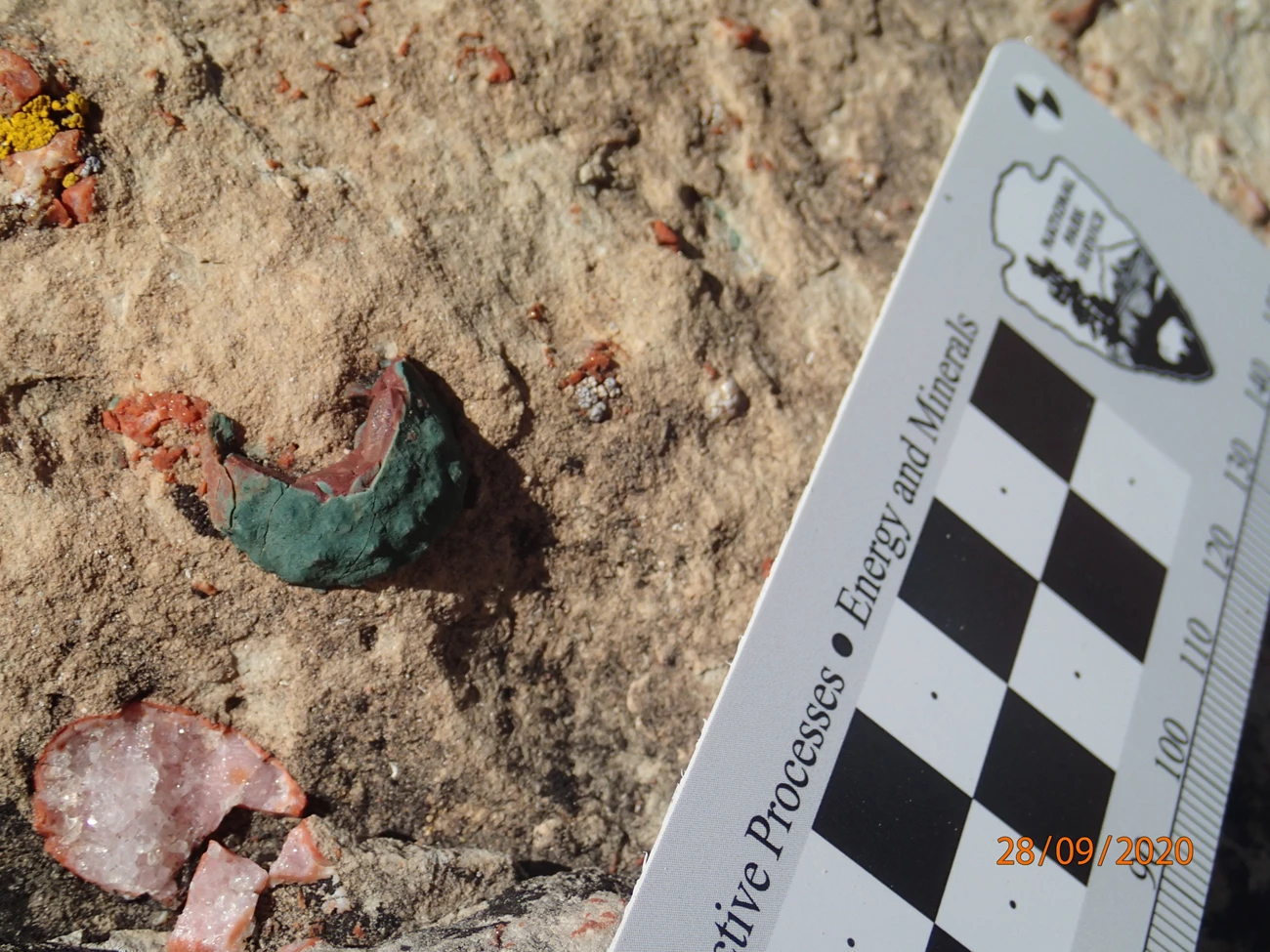
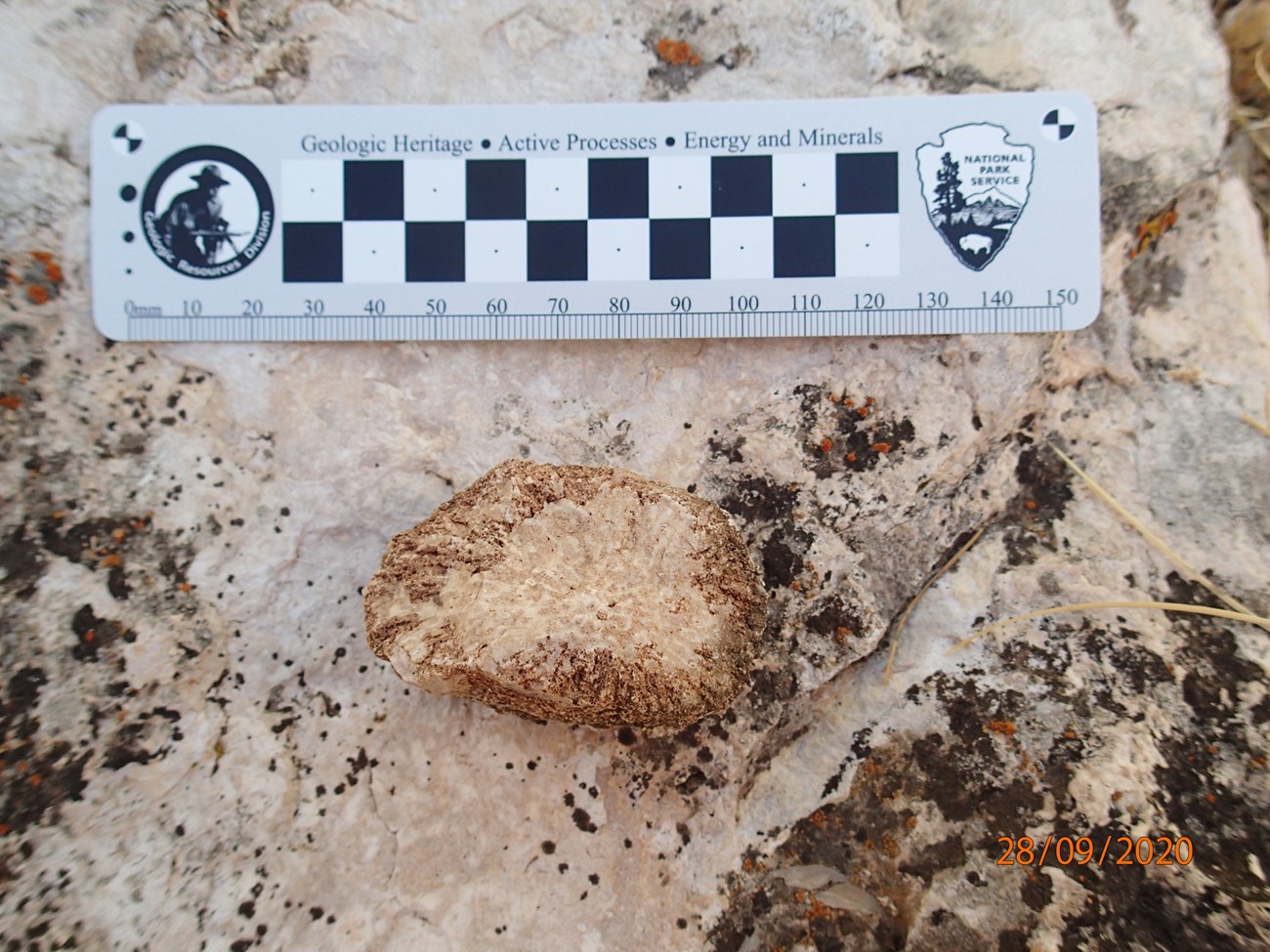
Also present in abundant outcrops throughout PARA is the Mississippian Redwall Limestone. The team documented thick beds with well-preserved rugose corals at multiple locations throughout the monument (Figure 9). Unfortunately, much of the observed Redwall Limestone is highly dolomitized. This reorganization from calcite to dolomite destroys original textures and fossil morphology. Thus, few other fossils were seen in the Redwall except in some chert lenses that do preserve evidence of the rich fauna present during the deposition of this marine unit.
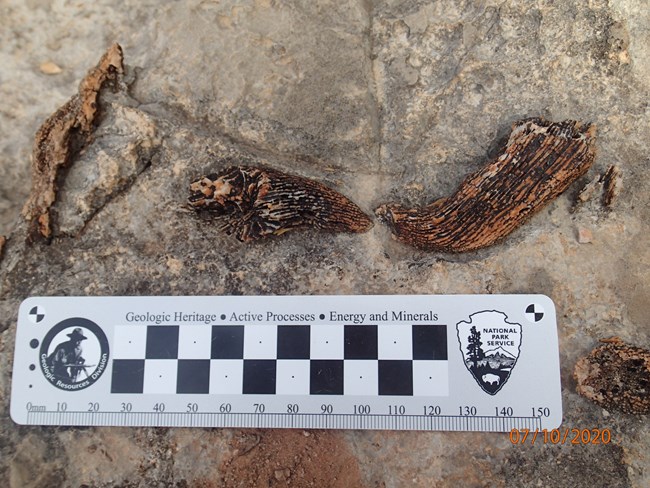
The Triassic Chinle and Moenkopi Formations represent another large portion of the localities Flora and Weeks surveyed in PARA. These units, unlike the Kaibab, Toroweap, and Redwall Formations, represent terrestrial deposits. Fossil trackways, burrows, and swim traces along with large amounts of petrified wood have been reported from these units. However, trace fossils such as tracks are a rare find. Both Chinle and Moenkopi sediments are loosely lithified causing erosion that forms talus-covered and weathered surfaces obscuring structures and fossils below. To spot a trackway you need to find the proper outcrop such as in a wash or along a road or water cut, then look for the better indurated layers which are exposed. Sometimes revisiting a site multiple times will yield a good find since fresh surfaces are revealed over time, especially after rainstorms.
One of the most fascinating aspects of the survey was the sinkhole shelters which contained Pleistocene carnivore dens. These were some of the few fossil vertebrate specimens encountered during the survey (Figure 4). Samples for radiometric dating analysis were taken with special precaution to prevent contamination. The researchers eagerly await the results. Some of the samples were small bones while other samples for dating are amberat. Amberat sounds like a beautiful mineral, but it is actually fossilized packrat urine. After a packrat nest has been inhabited for many generations, their excrement builds up and forms a vitreous, hard, black substance (Figure 10). Taking the oldest date from these samples will yield an approximate age for how long the shelters have been inhabited by these animals.
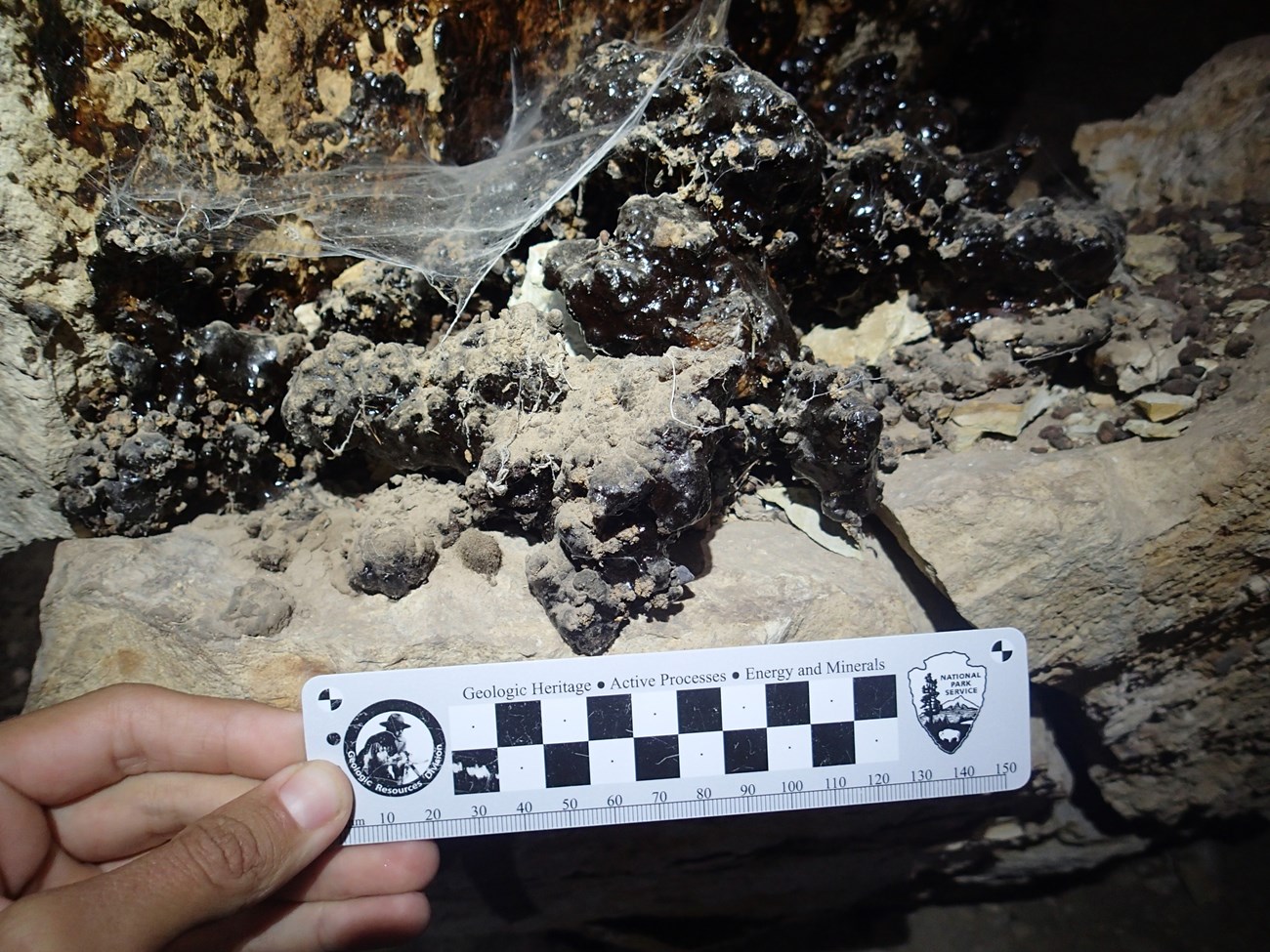
Flora and Weeks gathered many different types of data for use in a forthcoming inventory report and for use by park staff involved with interpretation, resource management, and other activities at the monument. Their work will help park law enforcement develop strategies to better protect areas with particularly sensitive resources. Park interpretive staff will be able to use some of the collected fossil specimens to educate the public about paleontology and the geologic past. Just like Flora and Weeks, many of the nearby communities have not yet heard of PARA, and even if they have, it is not a place that is easily accessible. Many 4-wheel drive vehicles don’t make it very far without the proper all-terrain tires, so having data, example specimens, and pictures of what is in the park is sometimes the only way to share PARA with the public.
Related Links
- Grand Canyon-Parashant National Monument, Arizona—[Geodiversity Atlas] [Park Home]
- NPS—Fossils Through Geologic Time
- NPS—Fossils and Paleontology
- NPS—Geology
Last updated: March 12, 2021
